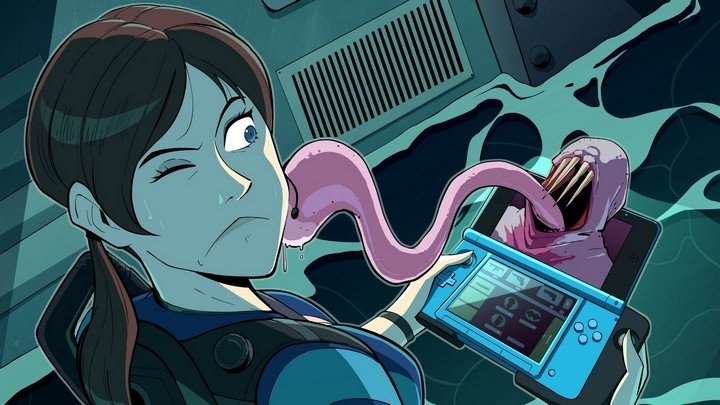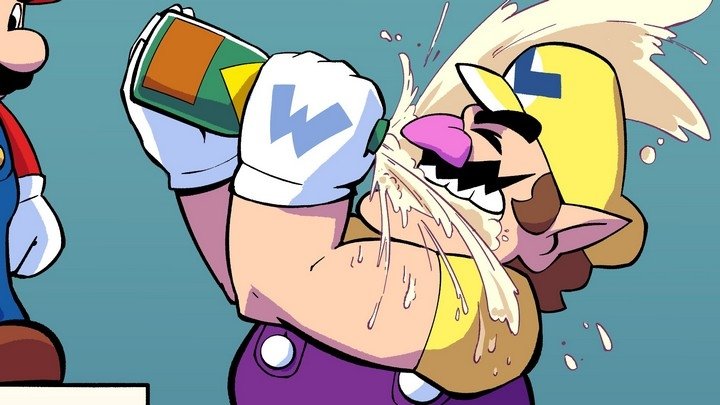Switch upholds two key Nintendo legacies: Portability and compromise
Nintendo's Switch has been my platonic ideal for a console from the first rumor: A high-end portable console with the option to play it on a television. It is, quite simply, what the Wii U should have been from the start, and I began daydreaming aloud about how much the Wii U could have been so much better if it had taken the form of a console/handheld hybrid along the lines of what Switch turned out to be. It took nearly five years, but my hybrid daydream has become Nintendo's critical business reality. I don't know how well this ambitious little system will do for the company, but after using it under real-world circumstances for a few days, I can say it's certainly doing a lot for me.
That said, I realize my tastes and expectations in games probably don't line up with those of the average game enthusiast. My biggest video game project over the past few years has been lining up as many vintage systems as possible to output perfect video output for high-definition recording: Not really your average gaming obsession. The question, then, is how well will a console that appears to have been custom-built to appeal to my tastes fare with the general gaming public? And perhaps more importantly, can it transcend the gaming public to the larger market the way Wii did? Nintendo certainly seems to be banking on that hope, and I absolutely see potential for crossover appeal here, but Switch presents a far more complicated concept of a system for people to deal with. Wii's hook — shake a funky remote control at the screen and your little man swings a tennis racket — was simple and obvious. Switch's crossover design hinges on complexity. You open the box and are confronted by the core system (a button-free screen that resembles a fatter Kindle Fire)... and a dock... and two controller add-ons... and two optional strap dongles for the controller bits... and a different optional dongle for the controller bits. If Switch is meant to be Wii-come-lately, it feels as though Nintendo skipped right over the "simple charm" phase of that system and directly to the "where did all these accessories come from?" portion of its life cycle.
This isn't a review of the console; those aren't allowed until next week, and anyway it would be impossible for me to properly review a console when many of its fundamental functions have yet to be unlocked through the day-one system update. Rather, I'd like to make two observations about Switch after having spent a few days of quality time with the new console.
The first comes straight from the heart: Whatever Nintendo may say about Switch's place in its lineup, this feels far more like an evolution of the company's portable legacy than of its consoles. In point of fact, it's a union of the two, and honestly is probably long overdue. But, Nintendo wants to hedge its bets, so it's been promoting Switch as a successor to Wii U, hoping to allow it to exist in parallel to the 3DS. This makes a good deal of sense on one level: The 3DS overcame its rough start to become an extraordinarily popular system and currently has an enormous install base, especially among younger players. The Wii U... did not. Rather than wipe both off the slate with a system that can easily replace both, Nintendo's promoting Switch as its new home console, while the 3DS (and, it should be said, the 2DS) soldiers on.
We saw this a decade ago with the Game Boy and DS, and Switch's dual-function nature as a part-time console at least allows a more graceful bit of hemming and hawing than those unconvincing claims about the DS being a "third pillar" to complement the successful Game Boy Advance and the catastrophic GameCube. Like the DS, the Switch feels more closely aligned with the handheld line… but once again, it's the console lineup that needs triage. So, sure, Switch is a console, not a portable. But you can bet that if it lives up to Nintendo's hopes, it'll suddenly become the new 3DS as well. And if not, that ongoing 3DS lineup gives them an opportunity for a face-saving reversal.
But make no mistake: Whatever the corporate messaging, Switch excels as a handheld system. It's a portable first and foremost, and it's fantastic in that regard. It really does feel in every way like a proper successor to its great-grandfather Game Boy and weird "uncle" Lynx (yeah, Lynx isn't really related, but he and great-grandpa go way back):
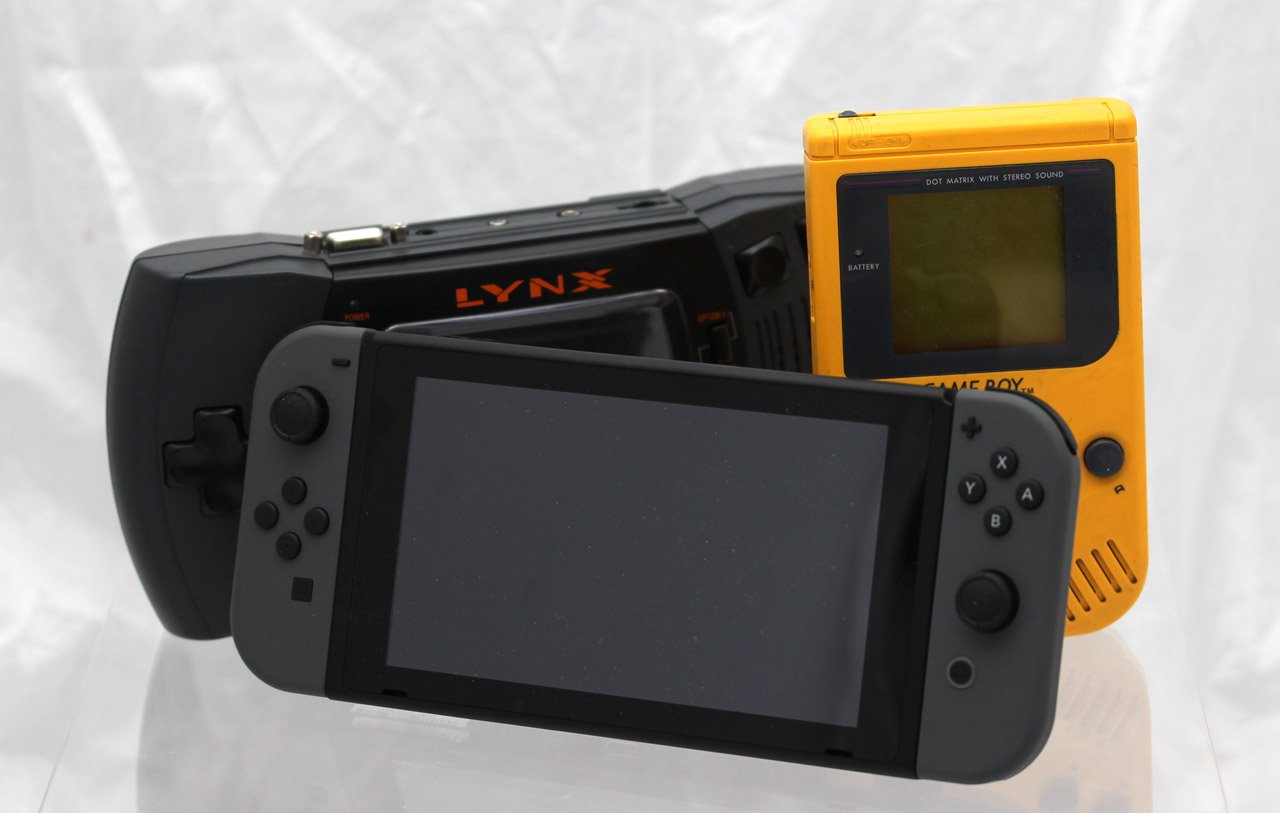
Never mind that it's the biggest handheld Nintendo has ever produced; it packs a respectable amount of power into its solid frame. It offers pretty much all the modern tech niceties: Bluetooth, wi-fi, and a reasonably capacious battery (it's good for four-plus hours of solid play with The Legend of Zelda: Breath of the Wild, which I suspect drains a good deal more power than something like 1-2 Switch). The six-inch screen looks great, with respectable pixel density and vivid colors and brightness. And it uses industry-standard tech, a welcome change from Nintendo's usual reliance on proprietary components: You can charge the unit with an off-the-shelf USB-C cable, and it accepts regular Micro SD cards — no overpriced Vita memory cards here. The one element of truly proprietary tech comes in the form of the game carts, which amount to tiny cards about the same size as Vita cards, albeit slightly thicker.
And really, the core system isn't much larger than a 3DS XL. Take off the Joy Con controller bits and the tablet-like core is maybe half an inch larger on the X and Y axes and quite a bit thinner on the Z.
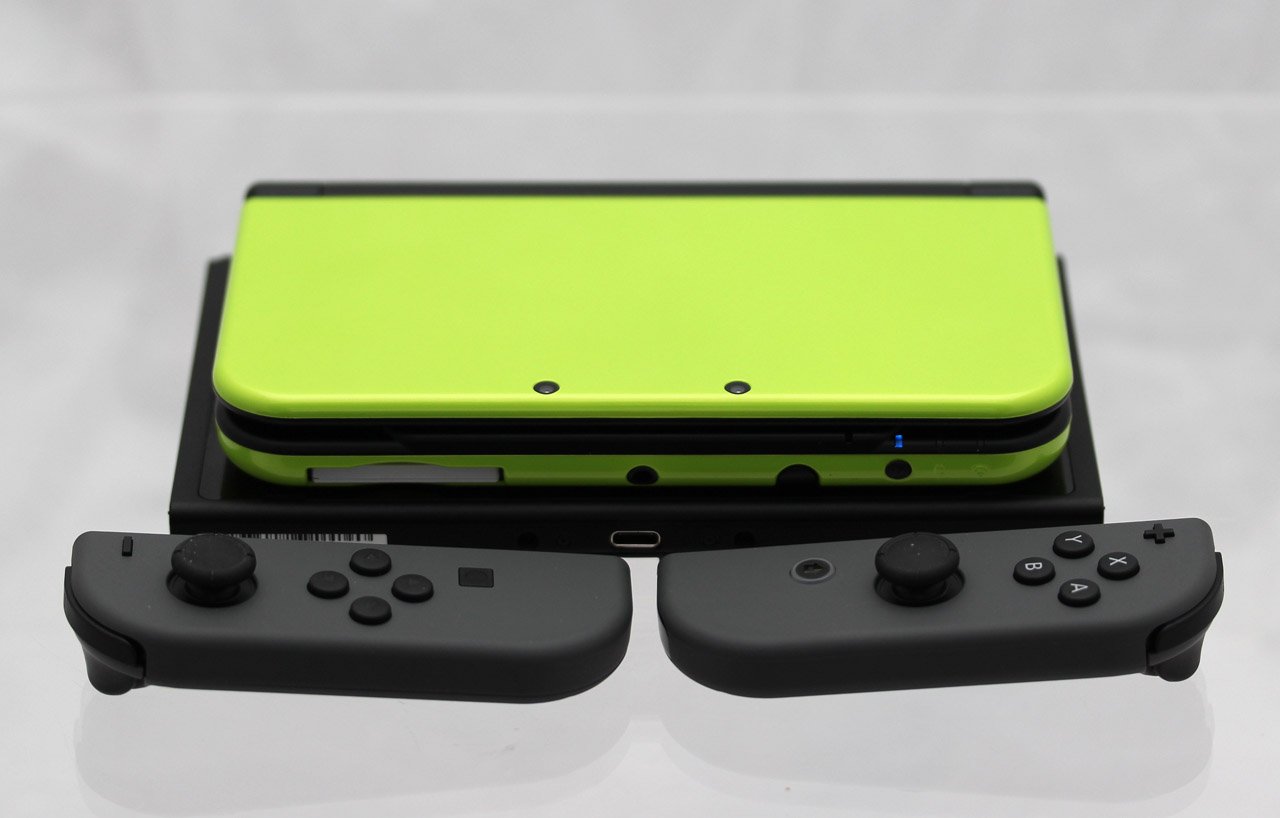
Which isn't to say it's quite as portable as the 3DS. The XL is already a chunky little guy that doesn't fit comfortably into most pockets, and Switch is even bigger. It's just enough larger to make it unlikely to fit into your 3DS XL carrying cases, or as the saying goes, "Just different enough to make you mad." I can just barely slide an uncovered 3DS into the inner breast pocket of a sport coat or blazer (because I dress like an adult but don't live like one), or even the outer side patch pockets. That doesn't work for Switch, especially since (1) its screen isn't protected by the DS family's clamshell closure and (2) you still have to fuss with the Joy Cons. Switch really demands a bespoke carrying solution, because no one's going to believe you can really fit it into a pocket (despite what television would have you believe).
With the Joy Cons connected, which is how you'll be transporting the system most of the time, the Switch core unit dwarfs the original Game Boy. The one everyone calls the "brick" because it's so huge.
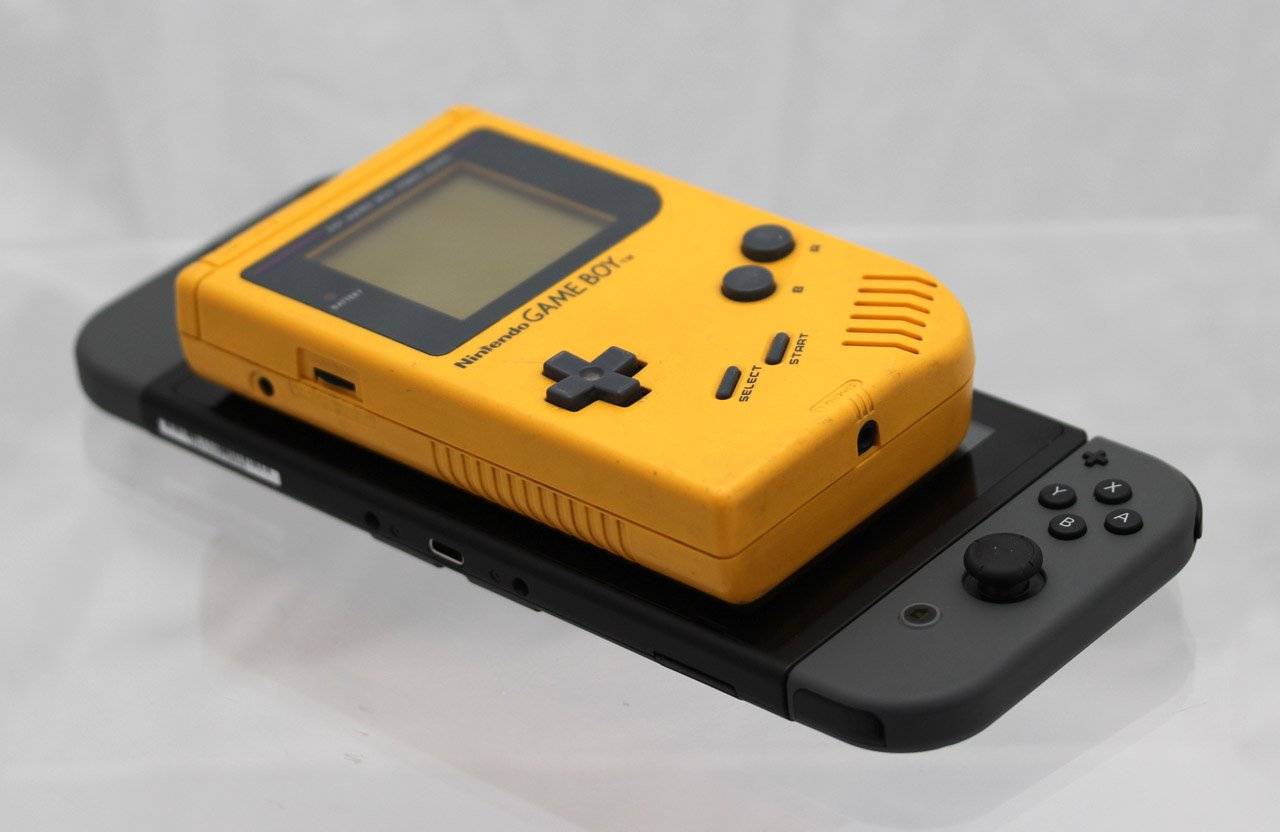
In fact, as a self-contained handheld system, Switch's lateral dimensions are almost identical to those of the Atari Lynx. The original Lynx, not the smaller revised model I have photographed here. That said, despite its width, this is no Lynx.
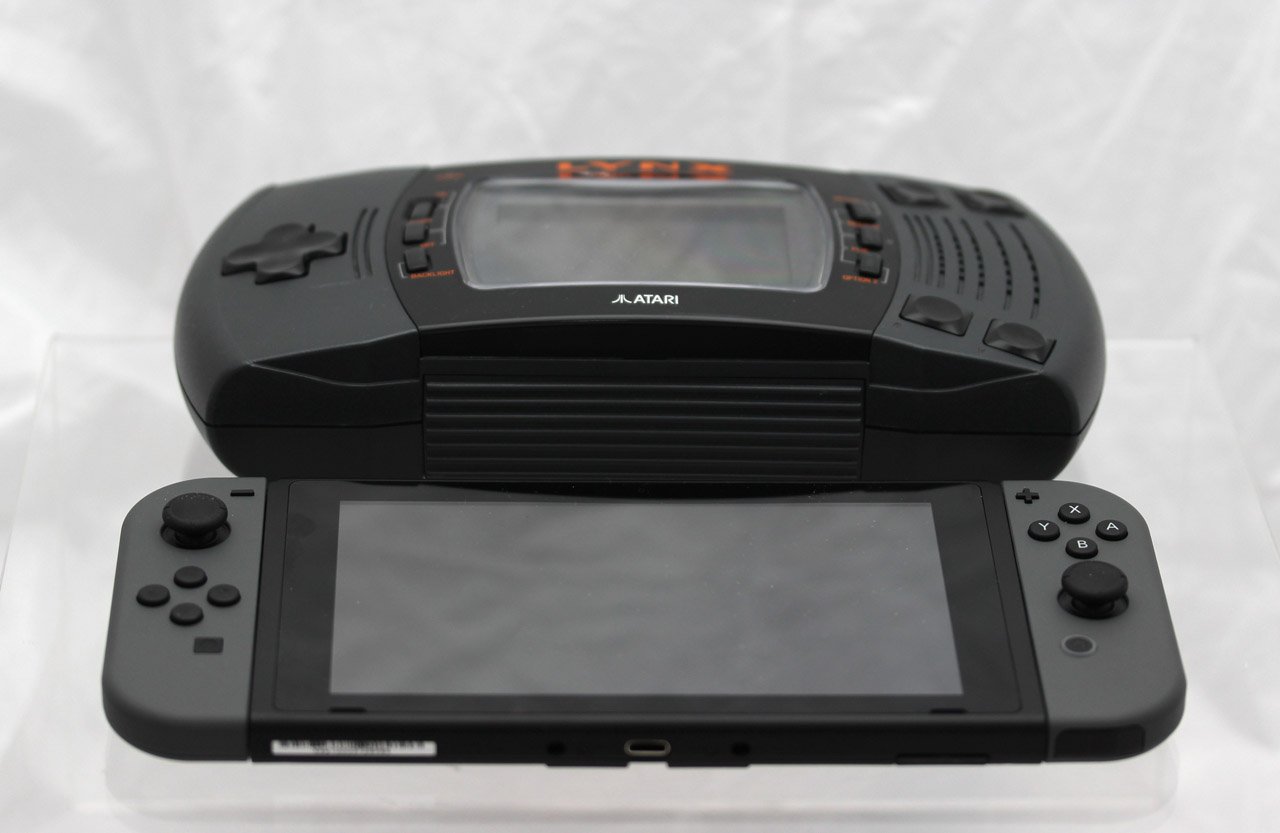
This is a far thinner device than any Lynx model, or in fact just about any portable Nintendo has ever produced either, outside of the 2DS. Part of me wonders if that might also have something to do with Nintendo's reluctance to peddle Switch as a 3DS family replacement: Besides not having dual screens (just one huge touch screen), it also feels a lot less likely to withstand the ravages of being used by the under-15 set. It's not a flimsy system by any means — it has a dense, solid feel in the hands, and potential weak points like the Joy Con rails are constructed from metals and other durable materials. But I wouldn't call it rugged by any stretch of the imagination. It's not difficult to imagine Nintendo eventually releasing a kid-friendlier version of Switch should it eventually ascend to become the 3DS's successor as well, but for now, it feels more like a grown-up's system.
This brings me to my second thought about Switch so far: Besides upholding Nintendo's portable legacy, it also maintains the company's tradition of compromise.
Compromise has always been a critical component of Nintendo's hardware strategy. The Game Boy's innards were a joke (based on ’70s tech, with a blurry four-color screen) compared to those of Atari's Lynx (one of the most impressive sprite-pushing devices ever made, with a vivid backlit full-color screen). And Game Boy triumphed, because its crummy hardware made it cheap, compact, and battery-friendly. People laughed at Wii because it was "two GameCube duct-taped together," but that was the entire point: It couldn't produce high-definition visuals, true, but it was cheap and accessible and sold better than any console in history besides PlayStation 2.
Likewise, Switch is all about compromise as well. Detractors point out the fact that it uses a generation-old mobile chipset and basically amounts to a new version of the Nvidia Shield. All of this is true, but I'm sure Nintendo went with this specific tech configuration because it was more energy-efficient and kept the price of the core system down. Which is something they really need to focus on, because Switch accessories are insanely expensive — and seem to be fairly vital as well.
The biggest compromises Switch makes aren't a matter of horsepower or battery juice, though. On those fronts, it seems to be perfectly decent. I don't think anyone expects Nintendo to lead the charge in terms of raw technological capabilities, so the fact that Switch can't compete toe-to-toe with PlayStation 4 Pro doesn't really hurt when you take into account the fact that, unlike PS4, you can play Switch on an airplane tray.
Rather, my biggest frustrations with Switch so far result from its ergonomics. As a fanatic for handheld systems, I find Switch to be very nearly the greatest handheld system I've ever used... except for all the tiny ways in which I wish its interface options were just a little bit different.

My complaints ultimately arise from the complexity of the system I mentioned earlier. Nintendo has essentially created a console that answers every possible use case you could imagine. A standard console, a portable system, a portable system you can set up on a table and play with friends, a system whose add-on controller components can work in tandem or as a pair of separate devices for two players. It's pretty fantastic, really, and fairly gutsy as a concept. But the system does trip over itself from time to time as it stretches to accommodate all these configurations.
As a handheld gaming device, Switch is big — like I said, as large in two of its dimensions as Atari's infamously enormous Lynx was. But it's much thinner than Lynx, and as a result of that thinness, it's not entirely comfortable in the hands. As you can see in the 3DS comparison image above, the Joy Cons have a bit of a hand grip molded into their backsides, but not really enough to compensate for the fact that you're holding a fairly hefty and fairly large rectangle of metal, glass, and plastic. It's not that the system is heavy enough to become fatiguing, exactly; I just find my hands becoming cramped in a way I'm not used to with portables, since its weight is spread across a larger area and needs to be held differently than a 3DS or Vita.
I'm also very much not in love with the button layout of the Joy Cons. Because Nintendo has designed them to function as paired controllers or a pair of controllers, they're forced to work across two axes. The left Joy Con doesn't have a D-pad, because those digital inputs need to double as separate buttons when the Joy Con is used alone. And the right Joy Con isn't symmetrical with the left, because it also needs to work as a miniature stand-alone controller. It's a little uncomfortable to use as a solo controller due to the centered placement of the analog stick relative to that of the left Joy Con. And I keep getting tripped up by the fact that the analog and digital controls aren't mirrored across the system; it's pretty unusual for a controller to put the digital buttons below the analog stick on one side and above the stick on the other, and nearly 20 years of gaming muscle memory have me fumbling for the right stick whenever I need to adjust the camera in Zelda.
I do appreciate the versatility of control options for Switch, though. When my hands cramp from holding the system for too long, I can pop out the kickstand and attach the Joy Cons to the included controller base to use the system as a miniature TV. You can also use the Joy Cons on their own, reminiscent of the Wii's remote-and-nunchuk configuration... though I find that my issues with the non-mirrored stick are heightened by this arrangement for some reason. Still, it really is the most versatile portable system ever made, and I'm looking forward to my cross-country flight next week for our upcoming Retronauts recording weekend. Breath of the Wild at 36,000 feet is nothing to sneeze at.
I'm sure many of my interface complaints — especially about the lack of a D-pad — would be made immaterial with the Switch Pro controller, but my review kit didn't include one of those. So for now, I'm simply getting by with the standard controls. Which is fine for now, since the only game I have to work with is Zelda, which doesn't require the use of a D-pad. But once the eShop opens and I want to download retro-style releases like Shovel Knight or The Binding of Isaac, I'm definitely going to have to pick up a Pro controller.
Despite these small criticisms, though, I really have fallen quite in love with Switch. As an avowed portable gaming enthusiast and historian, the fact that Nintendo has put together a sleek, adaptable handheld console that exceeds the power of its most recent traditional console is quite alright by me. No game system is perfect, and you always need to be willing to put up with some minor inconveniences in trade for your ideal experience. Switch's small complaints aren't completely trivial, but I can put up with them for what could prove to be the greatest portable system ever. Even if Nintendo isn't really calling it that. The TV hookup is just a bonus, for me.

